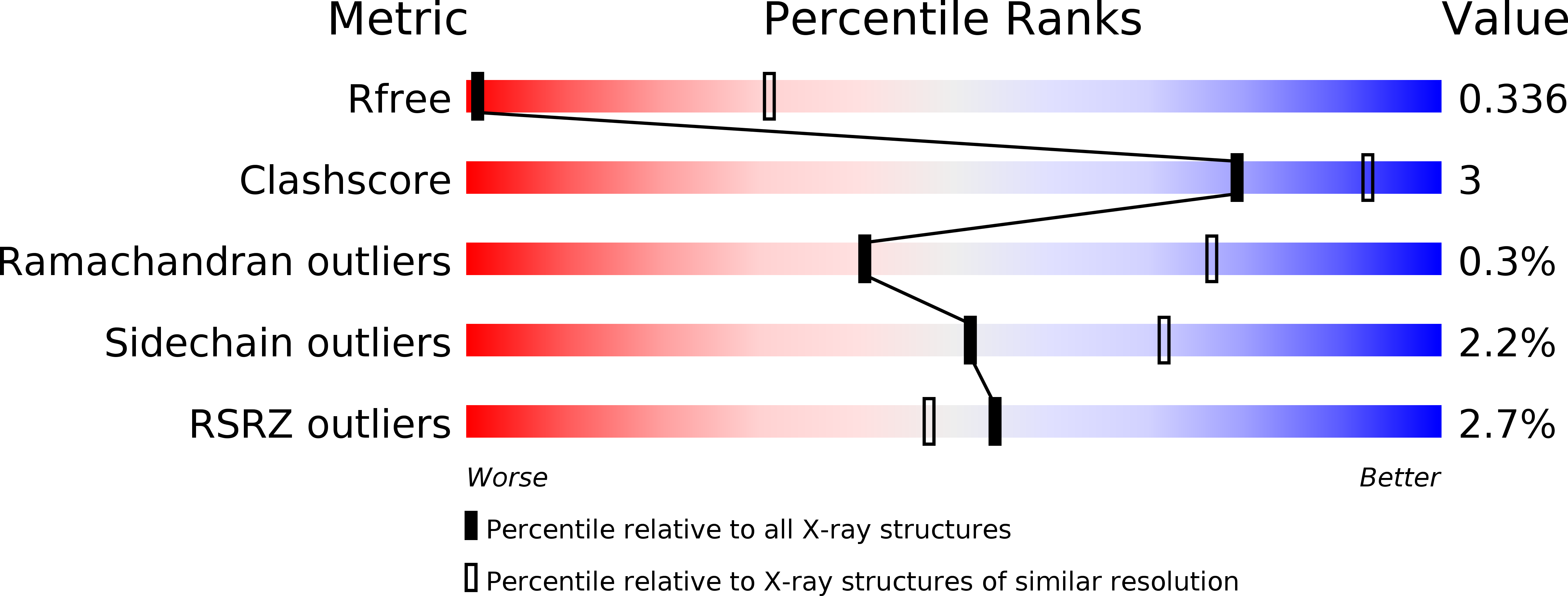Flexibility of the Thrombin-activatable Fibrinolysis Inhibitor Pro-domain Enables Productive Binding of Protein Substrates.
Valnickova, Z., Sanglas, L., Arolas, J.L., Petersen, S.V., Schar, C., Otzen, D., Aviles, F.X., Gomis-Ruth, F.X., Enghild, J.J.(2010) J Biol Chem 285: 38243-38250
- PubMed: 20880845
- DOI: https://doi.org/10.1074/jbc.M110.150342
- Primary Citation of Related Structures:
3OSL - PubMed Abstract:
We have previously reported that thrombin-activatable fibrinolysis inhibitor (TAFI) exhibits intrinsic proteolytic activity toward large peptides. The structural basis for this observation was clarified by the crystal structures of human and bovine TAFI. These structures evinced a significant rotation of the pro-domain away from the catalytic moiety when compared with other pro-carboxypeptidases, thus enabling access of large peptide substrates to the active site cleft. Here, we further investigated the flexible nature of the pro-domain and demonstrated that TAFI forms productive complexes with protein carboxypeptidase inhibitors from potato, leech, and tick (PCI, LCI, and TCI, respectively). We determined the crystal structure of the bovine TAFI-TCI complex, revealing that the pro-domain was completely displaced from the position observed in the TAFI structure. It protruded into the bulk solvent and was disordered, whereas TCI occupied the position previously held by the pro-domain. The authentic nature of the presently studied TAFI-inhibitor complexes was supported by the trimming of the C-terminal residues from the three inhibitors upon complex formation. This finding suggests that the inhibitors interact with the active site of TAFI in a substrate-like manner. Taken together, these data show for the first time that TAFI is able to form a bona fide complex with protein carboxypeptidase inhibitors. This underlines the unusually flexible nature of the pro-domain and implies a possible mechanism for regulation of TAFI intrinsic proteolytic activity in vivo.
Organizational Affiliation:
Center for Insoluble Protein Structure (inSPIN), Department of Molecular Biology, Science Park, Aarhus University, Gustav Wieds Vej 10C, DK-8000 Aarhus C, Denmark.
















